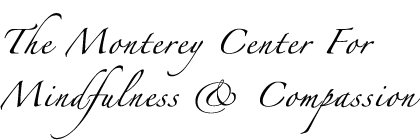The Flavor of Trees
I wasn’t a huge fan of summer camp. However, the year our counselor sent us on a scavenger hunt to find something outdoors that smelled like ice cream flavors — vanilla, strawberry, butterscotch, or chocolate — that got my attention.
None of us called it mindfulness at the time. But even as a kid, I felt the mental-emotional shift this outing triggered, and it stays with me.
Slowing down enough to take in one of those trees with all five senses was like making friends with a giant alien, whose skin curiously looked like millions of orange-brown puzzle pieces, and who smelled delicious, like an ice cream parlor: Vanilla, strawberry, butterscotch; maybe even chocolate.
Today, I might call that beginner’s-mind** experience with ponderosa pine trees Mindfulness of Sensing. Slowing down that week, pausing, and letting senses lead for a while, instead of the usual thoughts and doubts, I was introduced to trees in ways that my city-girl head had always dissed and missed.
And it only took a minute for this shift to reveal itself. Last month I shared a Three-Minute Breathing Space practice that uses breath and body as objects of attention. Below is another short, informal practice that can turn the volume down on anxious or worry-driven thinking by engaging all five senses with nature — or any chosen physical surroundings.
Mindfulness as embodied practice invites awareness of all that’s alive from the neck down, as well as from the neck up. In that spirit, following is a three-minute practice to heighten our engagement with the body and senses. Feel free to take more time with it, if possible; either way, this short mindfulness of sensing practice is guaranteed to shift the flavor of your day:
1) Begin by choosing a place that’s comfortable, and helps you feel relatively calm and relaxed. A favorite outdoor location is ideal. But whether inside or out, before you begin, take a quick survey of any range of sights, sounds (including quiet), smells, textures, and/or possibility of tastes (ie, a favorite tea).
2) Take a moment to settle; take a few deeper breaths, relaxing any areas of tension as you exhale.
3) Choose an object in your near surroundings that catches your eye - preferably one that you enjoy in some way. Spend a minute with just this object - perhaps holding it, taking in it’s color, shape, texture, temperature, smell… Not thinking about it, but noticing what it feels like, maybe catching something new in it. As you do this, notice what you’re feeling physically. How’s your breath? Scan through the body for any shifting sensations or emotions, subtle or not-so-subtle. Noticing what’s here, and/or if not much is palpable.
4) For the next minute, let your attention widen to include all that’s surrounding that object - perhaps a seascape, forest, backyard, window view, or whatever’s around you in the room, if inside. As you widen the lens of your attention, do you feel any shift in body sensation? Breathing, noting, along with this wider gaze, any movement or feelings around the heart space, or subtleties of emotional tone? If there’s not much to be felt, gently notice that. Noticing and letting go of thoughts, simply take in all that’s available to see, hear, smell, touch, or feel in any way that’s available to you right now, letting sights, sounds, and body sensation fill your awareness.
5) For the last minute, once again narrow your attention to a single object - either the same one as before, or a different one. Hold it in awareness with as many senses as possible - touch, smell, taste… and as you breathe, notice what’s happening physically, in the realms of sensation and feelings. Being present with kind awareness to whatever is here.
6) When you’re ready, bring your attention to breathing for 2 or 3 breaths.
Slowly bring your attention back to the space around you. Note what’s arisen for you during this short practice, and how it might inform the rest of your day.
** In mindfulness, "beginner's mind" denotes seeing or sensing something as if for the first time, letting go of all filters and preconceptions, as though with the curiosity of a very young child.
